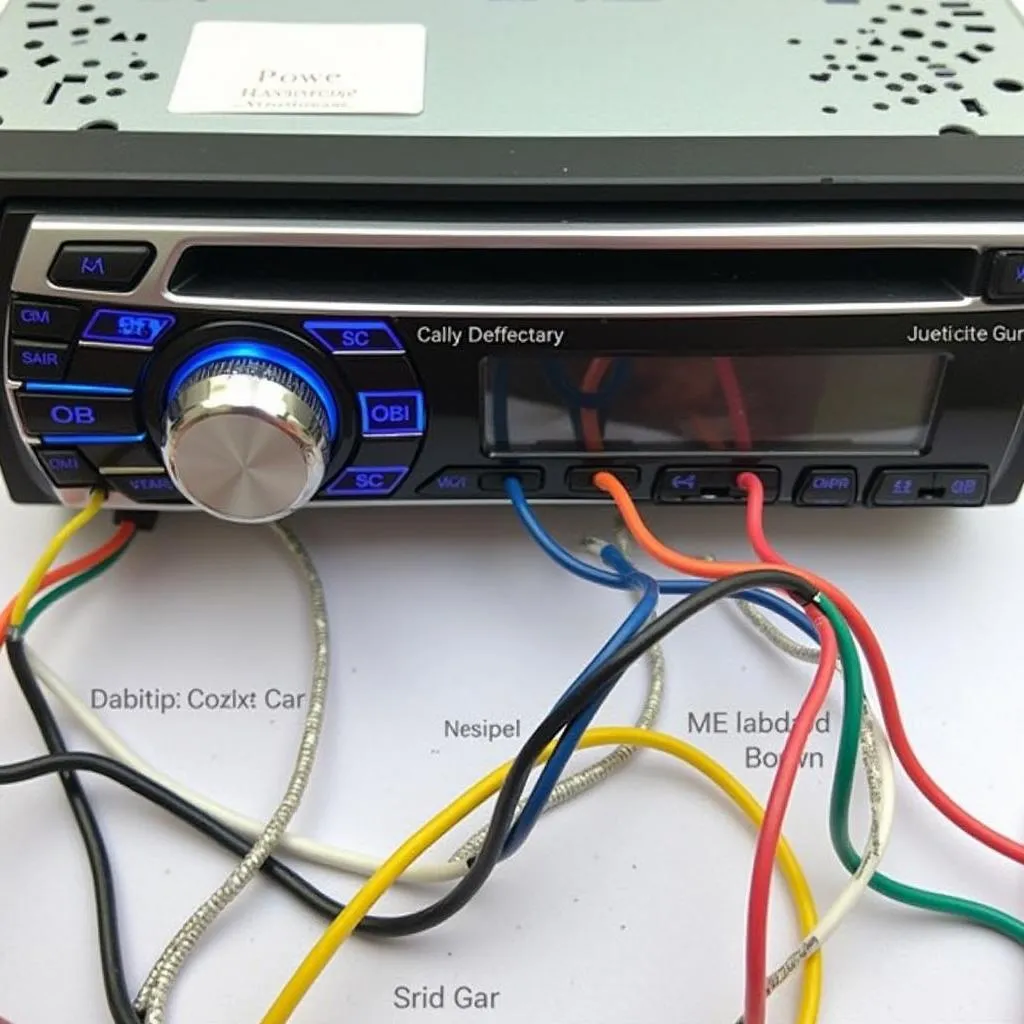Imagine this: you’re about to head out, but your car refuses to start. You hear a clicking sound, the lights dim, and a sinking feeling hits – it’s your car’s anti-theft system acting up! A malfunctioning immobilizer can be a major headache, leaving you stranded. This article dives into the world of car anti-theft systems, specifically focusing on what disables them and how to get your car back on the road.
Why is My Anti-theft Device Disabling?
Modern vehicles often have sophisticated immobilizer systems designed to prevent theft. While effective, these systems can sometimes malfunction, leading to unexpected vehicle disablement. Here’s a look at some common culprits:
1. Weak or Dead Key Fob Battery
This is one of the most frequent causes. Your car’s anti-theft system relies on a signal from your key fob to disengage the immobilizer. If the battery is weak, the signal might be too faint, leading the system to think the wrong key is being used.
2. Faulty Ignition Switch
The ignition switch is the bridge between your key and the car’s electrical system, including the immobilizer. A worn-out or malfunctioning switch can disrupt this connection, causing the anti-theft system to stay active.
3. Malfunctioning Immobilizer System
Though less common, issues within the immobilizer system itself, like a faulty control module or sensor, can lead to malfunctions and prevent your car from starting.
Recognizing the Signs of Anti-theft Problems
Knowing the signs of a potential anti-theft issue can save you time and frustration:
- Rapidly Flashing Security Light: A constant or fast blink of the security light on your dashboard, even when the car is off, often indicates an issue with the immobilizer system.
- Engine Cranks but Won’t Start: If your engine cranks but fails to fire up, it could be a sign that the immobilizer isn’t disengaging.
- Key Fob Not Working Properly: Difficulty locking or unlocking doors, or the need to stand closer to the vehicle than usual for the key fob to work, could point to a weak battery or a faulty immobilizer.
Getting Back on Track: Tools for the Job
Before diving into troubleshooting, you might need a few essential tools:
- A Reliable Code Reader: A code reader can pinpoint the exact issue with your anti-theft system by reading the Diagnostic Trouble Codes (DTCs) stored in your car’s computer.
- New Key Fob Battery: Always have a fresh battery on hand, especially if you suspect the current one is weak.
- Vehicle Repair Manual: Your car’s repair manual is a treasure trove of information and can guide you through specific troubleshooting steps.
Troubleshooting Your Car’s Immobilizer System
While some issues might require professional help, here are some steps you can take:
- Start with the Basics: Replace the key fob battery with a fresh one, ensuring it’s the correct type for your car model.
- Check for Loose Connections: Inspect the wiring around the ignition switch and immobilizer components for any loose or damaged connections.
- Utilize Your Code Reader: Connect the code reader to your car’s OBD-II port to retrieve any stored fault codes related to the immobilizer. These codes can guide you toward the problematic area.
If these steps don’t resolve the issue, it’s best to contact a qualified automotive electrician or your dealership for further diagnosis and repair. They have the expertise and specialized equipment to handle complex immobilizer problems.
FAQs: Addressing Common Anti-theft Concerns
How do I know if my car has an anti-theft system?
Most modern cars come equipped with anti-theft systems. Look for a flashing security light on your dashboard, check your owner’s manual, or search for information specific to your car’s make and model online. If you’re still unsure, a trusted mechanic can quickly confirm this for you.
Can I bypass my car’s anti-theft system?
While it’s technically possible to bypass some anti-theft systems, it is highly discouraged. Bypassing these systems leaves your vehicle vulnerable to theft and may even be illegal in some areas.
My car’s anti-theft system is preventing me from starting it. What should I do?
If your car won’t start due to a suspected immobilizer issue, try the troubleshooting steps outlined earlier. If the problem persists, it’s crucial to seek help from a qualified automotive electrician or your dealership. Tampering with the system yourself can lead to further damage.
Cardiagtech: Your Partner in Automotive Diagnostics
Facing persistent car trouble? Consider equipping yourself with professional-grade diagnostic tools from CARDIAGTECH. Our range of advanced code readers empowers you to understand and address vehicle issues, including those pesky immobilizer problems. Visit our product page to learn more about the tools we offer.
Navigating the intricacies of your car’s anti-theft system can be challenging. However, understanding the basics of immobilizers and knowing how to troubleshoot common issues can save you time, money, and a lot of frustration. Remember, when in doubt, always consult with a qualified professional to ensure your car’s security and your peace of mind.

